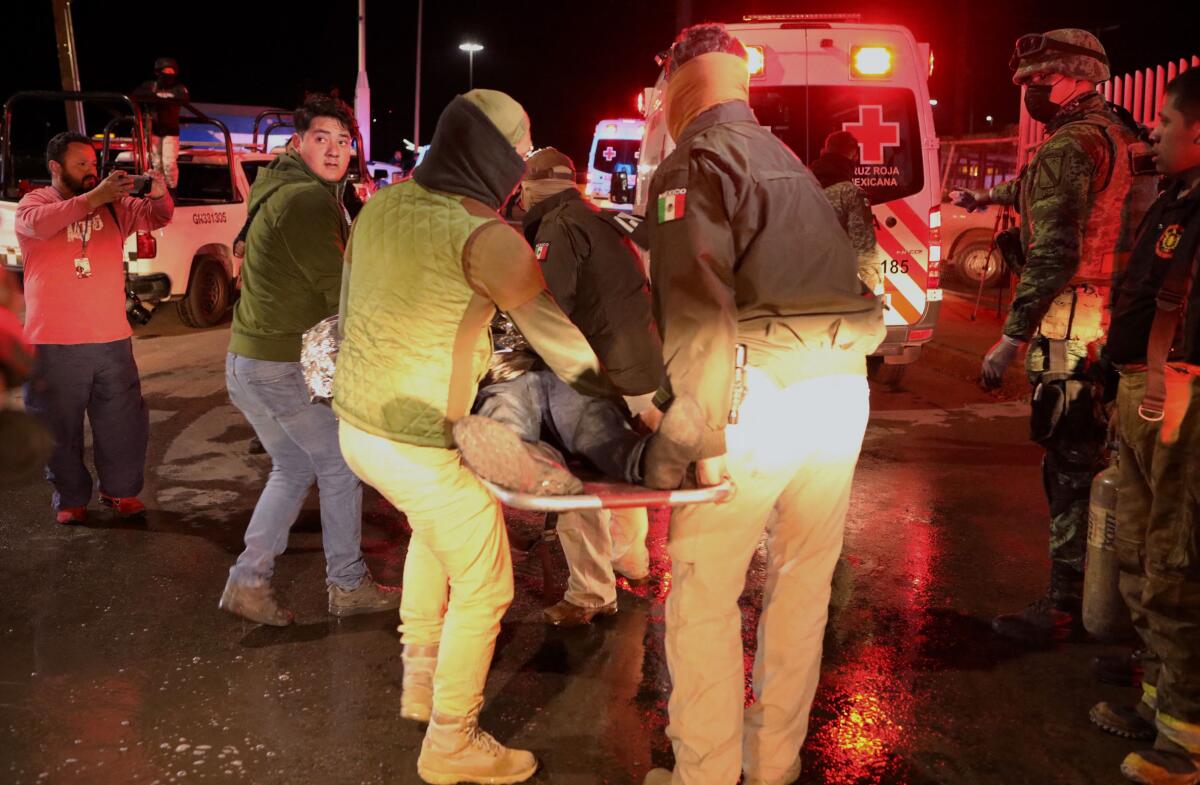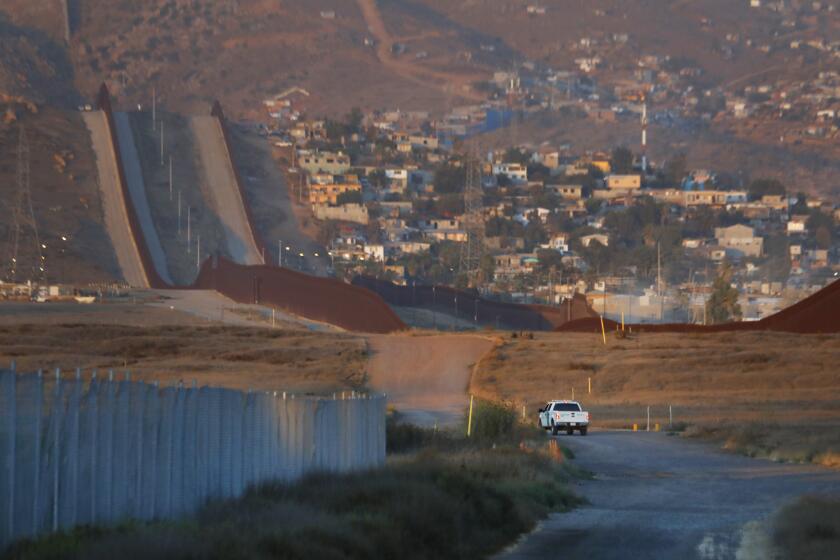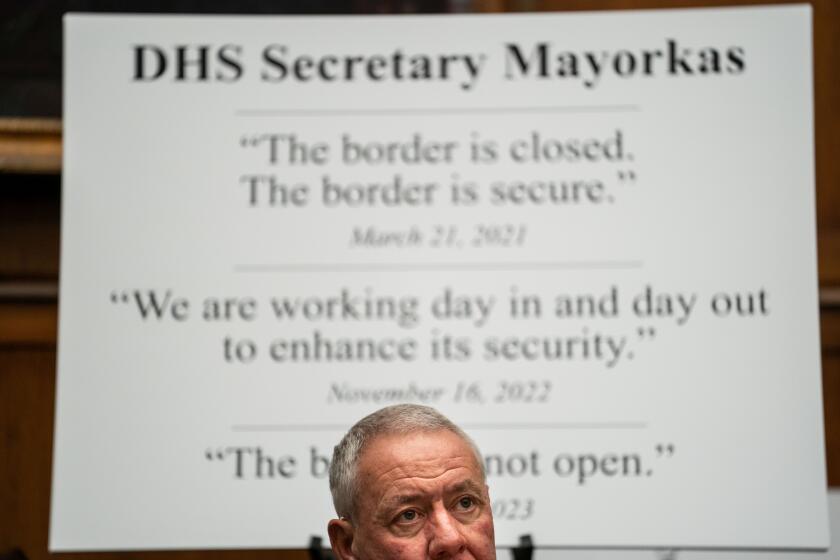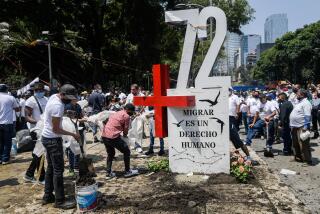Editorial: Migrant deaths at Mexican detention center symbolize failed immigration policies

- Share via
The deaths of at least 39 migrants at a Mexican detention center near the U.S.-Mexico border this week shows that immigration policies in Mexico and the U.S. are failing miserably in addressing the historic number of migrants escaping oppressive regimes.
Mexican President Andrés Manuel López Obrador on Wednesday vowed that his government would conduct a thorough investigation and punish those responsible for the deaths and possible human rights violations of detainees at the migrant detention center in Ciudad Juárez. This is a necessary move, especially given that a video authenticated by Mexico’s Interior Minister shows two guards abandoning detainees in a locked room as a fire rapidly spreads at the detention center.
In addition to an investigation into the fire, these migrant deaths call for government officials on both sides of the border to reexamine the restrictive immigration policies that played a role in this tragedy.
The U.S.-Mexico border is a complex region not easily reduced to sound bites that sometimes turn out to be just myths — or convenient lies.
Unstable governments in countries such as Guatemala, Venezuela and Haiti are prompting a record number of migrants to seek safety and work in other countries, with many intending to arrive in the United States. The number of migrants apprehended by the U.S. authorities at the southern border has increased from more than 977,000 in 2019 to more than 2.3 million in 2022. These figures are prompting Republican lawmakers to call for ever more restrictive border policies, though that approach has failed to deter migrants.
The U.S. government in recent years has enacted policies with the goal of dissuading migrants from arriving at the border by severely curtailing who can apply for asylum. The most notorious is Title 42, a health order that gives government officials the power to bar migrants to prevent the spread of communicable diseases. It was first used by former President Trump at the height of the COVID-19 pandemic and expanded by President Biden. Those who don’t qualify for asylum are ejected to Mexico. Such an agreement requires the cooperation of the Mexican government, though the country is ill-equipped to deal with the influx of migrants.
Mexico detains tens of thousands of migrants every year in what is one of the largest immigration detention systems in the world, according to the Geneva-based nonprofit migrant advocacy group Global Detention Project. In response to U.S. pressure, the Mexican government has increased detentions of migrants.
Republicans have begun the wasteful process of gathering evidence to impeach Secretary of Homeland Security Alejandro Mayorkas. It’s a blatant effort to score political points, rather than develop better border policy.
In recent months, thousands of migrants hoping to cross the border have strained resources and shelter in Ciudad Juárez. Migrants look for work, or sell gum and other small items at the border, but some must beg for money and sleep on the streets. Mexican authorities regularly round up migrants to take them to detention centers, where conditions are overcrowded, according to migrants in the city.
Before the investigation had been conducted, the Mexican president seemed to blame the migrants for the tragedy by starting the fire to protest conditions at the detention center, which he said is run by government migration officials and a private security company. On Wednesday, following the release of the horrific video, López Obrador struck a different and more appropriate tone, offering his condolences.
Most of the migrants killed in the fire were from Guatemala, where corruption, violence, extortion and poverty are the top reasons for migration, according to the U.S. Agency for International Development.
Policies on both sides of the border are placing migrants in dangerous situations and violating their right to seek asylum. With Title 42 slated to end in May, a more effective and humane approach to the high levels of migration would be for governments in both countries to create a more orderly immigration process.
In the U.S., policymakers should ensure that such a system is well-staffed to allow migrants to apply for asylum and to determine in a timely manner whether they qualify, so they are not stuck in dangerous limbo at the border. Otherwise, it will be a matter of time before another tragedy claims the lives of migrants.
More to Read
A cure for the common opinion
Get thought-provoking perspectives with our weekly newsletter.
You may occasionally receive promotional content from the Los Angeles Times.












